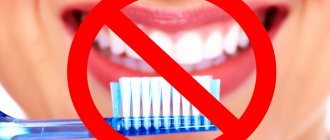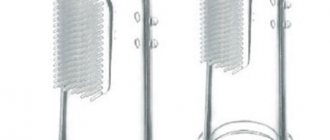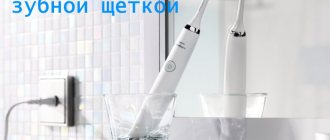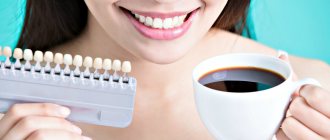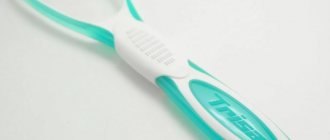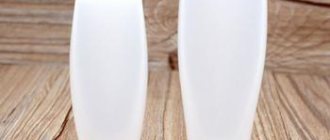Currently, medicine has come so far that diagnostic methods have become more accurate, and a variety of methods allows us to achieve an accurate diagnosis, and, therefore, the treatment prescribed by a doctor will be more effective. The medical center has its own clinical laboratory, which uses the most modern diagnostic methods. In particular, it is possible to use several methods to diagnose the presence of viruses in the human body. For example, a saliva test for viruses is the most informative and accurate.
Why is saliva taken for analysis?
Saliva is a biological fluid with important functions:
- ensuring food chewing;
- formation of a food bolus;
- swallowing function;
- oral cavity protection;
- Salivation is a process that produces lubricant.
It is a colorless liquid with a neutral alkaline reaction, which contains the following substances:
- antimicrobial components (lysozyme, secretory immunoglobulin A);
- digestive enzymes (ptialin, lingual lipase);
- epidermal growth factor;
- chloride, potassium, sodium and other electrolytes;
- amino acids, glucose, lactic acid, vitamins K, C, B1, H.
That is, the composition of saliva completely reflects the structure of blood plasma.
A real cocktail
The fluid that is secreted by the salivary glands is a whole cocktail of proteins, vitamins, micro- and macroelements, although most of it, 98–99%, is water.
The concentration of iodine, calcium, potassium, strontium in saliva is many times higher than in the blood. Microelements are also present in the salivary fluid: iron, copper, manganese, nickel, lithium, aluminum, sodium, calcium, manganese, zinc, potassium, chromium, silver, bismuth, lead. Article on the topic Protect the liver. Hepatitis C can be detected by saliva testing
Such a rich composition ensures the proper functioning of salivary enzymes, which begin digesting food in the mouth. One of the enzymes, lysozyme, has a significant bactericidal effect - and it is isolated for the preparation of certain drugs.
Sputum culture for microflora and sensitivity to antibiotics
For bacteriological examination, sputum is collected before the start of antibacterial therapy or after a certain period of time after administration of the drug.
Collection procedure
- Sputum is collected in the morning, on an empty stomach. Before collecting sputum, brush your teeth and rinse your mouth with water to remove food particles and bacterial plaque. Take two deep breaths, holding your breath for a few seconds, and after each deep breath exhale slowly. Then inhale a third time and forcefully exhale (push) the air out. Inhale again and clear your throat well.
- Hold the container as close to your mouth as possible and carefully spit the mucus into it after coughing. Be careful not to get any sputum on the edge of the container. Do not touch the inside of the lid or the sides of the sterile container with your fingers. Close the container tightly with the lid.
- Wash your hands with soap.
- Deliver the morning sputum collected for examination to the laboratory. In this case, conditions must be created to prevent its cooling during transportation. Otherwise, changes in sputum qualities and the composition of microbial colonies will quickly occur, which may distort the results of the study.
Attention! You should not collect sputum released during expectoration, only when coughing. Saliva entering the sample can significantly affect the test result.
What can you find out during the examination?
The highest accuracy of DNA tests allows their results to be used not only for scientific work, but also to establish the truth in controversial issues:
- the study reveals all genetic pathologies and susceptibility to certain diseases, such as diabetes, hepatitis;
- Genetic analysis of saliva establishes relationship with more than 99% accuracy. DNA testing determines both paternity and maternity;
- This is how a close relationship is established when the surnames coincide, for example;
- nationality analysis allows you to determine ethnic group and genealogical origin. It is known that representatives of different nationalities are susceptible to certain diseases to varying degrees. The test result allows you to adjust your lifestyle in order to avoid them;
- in this way, the patient’s addiction to drugs or alcohol is diagnosed, and intolerance to certain medications and products is determined;
- Most often, genetic analysis of saliva is used for personal identification. In forensic science, DNA testing began to be used immediately after the discovery of Dr. Alec Jeffries. The study of any biomaterial from a crime scene - blood stains, skin particles on upholstery, saliva on a cigarette filter - allows you to accurately determine whether a particular person was at the crime scene.
DNA profiling, although not a full-fledged study of the genome, provides a huge amount of information. Using the test results, individual diets are drawn up, rehabilitation methods and treatment regimens are developed, and the cause of infertility is determined.
Rules for sputum collection
It is unacceptable to send sputum for examination in containers not intended for these purposes, as they may contain substances that can distort the test results.
Sputum should not be divided into two parts for examination in different laboratories, since important components may end up in only one of the containers.
- Sputum is collected in the morning, on an empty stomach. Before collecting sputum, brush your teeth and rinse your mouth with water to remove food particles and bacterial plaque. Take two deep breaths, holding your breath for a few seconds, and after each deep breath exhale slowly. Then inhale a third time and forcefully exhale (push) the air out. Inhale again and clear your throat well.
- Hold the container as close to your mouth as possible and carefully spit the mucus into it after coughing. Be careful not to get any sputum on the edge of the container. Do not touch the inside of the lid or the sides of the sterile container with your fingers. Close the container tightly with the lid.
- Wash your hands with soap.
- Deliver the morning sputum collected for research to the laboratory no later than 1–1.5 hours after collection. In this case, conditions must be created to prevent its cooling during transportation. Otherwise, changes in sputum qualities and the composition of microbial colonies will quickly occur, which may distort the results of the study.
Attention Do not collect sputum released during expectoration, only when coughing. Saliva entering the sample can significantly affect the test result.
From ulcers to infections
An experienced doctor can judge the condition and functioning of certain organs by the nature of saliva, as well as identify certain diseases at an early stage. Thus, during infectious diseases, the slightly alkaline reaction of saliva changes to acidic. With nephritis (inflammation of the kidneys), the amount of nitrogen in saliva increases, the same thing happens with peptic ulcers of the stomach and duodenum. With diseases of the thyroid gland, saliva becomes viscous and foamy. The composition of saliva also changes in some tumors, which makes it possible to detect the disease or confirm the diagnosis when the clinical picture is not yet obvious.
Article on the topic
Come on, breathe! What causes bad breath
As the body ages, the proportions of micro- and macroelements in saliva are disrupted, which leads to the deposition of tartar, increasing the likelihood of caries and inflammatory periodontal diseases.
There is a change in the composition of saliva during fasting, as well as with certain hormonal imbalances.
So don’t be surprised if your doctor orders a saliva test—you can really learn a lot from it.
Taste of illness. How to determine your diagnosis by the taste in your mouth
More details
Sputum. Microscopic mushrooms (complex)
Sputum is collected before starting antibiotic therapy. First brush your teeth, gums and tongue with a toothbrush and rinse your mouth with boiled water at room temperature.
Collection procedure
- Take two deep breaths, holding your breath for a few seconds, and after each deep breath exhale slowly. Then inhale a third time and forcefully exhale (push) the air out. Inhale again and clear your throat well.
- Hold the container as close to your mouth as possible and carefully spit the mucus into it after coughing. Be careful not to get any sputum on the edge of the container. Do not touch the inside of the lid or the sides of the sterile container with your fingers. Close the container tightly with the lid.
- Wash your hands with soap.
- Deliver the morning sputum collected for examination to the laboratory.
Attention! A high-quality material for analysis is considered to be sputum that is mucous or mucopurulent in nature, and also contains dense whitish inclusions.
Sputum. General clinic
- Sputum is collected in the morning, on an empty stomach. Before collecting sputum, brush your teeth and rinse your mouth with water to remove food particles and bacterial plaque. Take two deep breaths, holding your breath for a few seconds, and after each deep breath exhale slowly. Then inhale a third time and forcefully exhale (push) the air out. Inhale again and clear your throat well.
- Hold the container as close to your mouth as possible and carefully spit the mucus into it after coughing. Be careful not to get any sputum on the edge of the container. Do not touch the inside of the lid or the sides of the sterile container with your fingers. Close the container tightly with the lid.
- Wash your hands with soap.
- Deliver the morning sputum collected for research to the laboratory no later than 1–1.5 hours after collection. In this case, conditions must be created to prevent its cooling during transportation. Otherwise, changes in sputum qualities and the composition of microbial colonies will quickly occur, which may distort the results of the study.
Attention! Do not collect sputum released during expectoration. Saliva entering the sample can significantly affect the test result.
The hormone of vigor and stress: how to properly test saliva for cortisol
Cortisol is commonly associated with stress and a number of negative consequences. However, in fact, it is what ensures awakening and vigor, promotes motivation and efficiency, maintains the “right” level of blood pressure and “sugar”, and also “slows down” the immune system from triggering allergic, autoimmune and other distorted reactions. But the direction of the effects of cortisol is determined by the level of its “dose” in the blood. And the bias, both towards “+” and “-”, obviously does not bode well.
Circadian rhythms
As you know, most hormones in the body have a more or less definite daily rhythm of release.
Cortisol, in this sense, is one of the most time-sensitive hormones, and its “work schedule” looks something like this:
- At about 4-5 o'clock in the morning, cortisol begins to pulse into the blood to prepare the body for awakening, which is manifested by an increase in blood pressure, pulse, and a decrease in blood clotting. And that is why the highest incidence of heart attacks and strokes occurs in the early morning hours;
- at 6-8 o’clock in the morning the hormone level reaches a maximum, which can shift by 1-2 hours both towards “-” and “+” - for “larks” and “night owls”, respectively;
- from 8-9 to approximately 12 noon - the cortisol concentration is slightly lower than the maximum in the morning, but is sufficient to maintain vigor and activity;
- and in the period from 12 to 15 days - the level of the hormone begins to decline inexorably,
- True, by about 15-16 hours, adjusted for “larks” and “night owls”, some may feel the so-called “second wind”, usually lasting no more than 1-2 hours and not reaching the morning level in hormone concentration;
- and then cortisol finally “declines”;
- and around 22-24 hours at night - reaches its minimum daily value and remains this way until 4-5 in the morning, when it begins to increase again and the daily cycle repeats.
Why not the norm?
Based on the above, it is obvious that it is advisable to take tests for cortisol (and in particular, saliva) several times a day, or at least in the early morning and evening (7.9.A1).
An increase in cortisol concentrations in the morning may indicate getting up too early (which is “regarded” by the body as stress), working night shifts, or a “banal” lack of sleep. It is also typical for pathology of the adrenal glands (Itsenko-Cushing’s disease), some diseases of the pituitary gland (since it “sets” the level of cortisol), as well as hyperfunction of the thyroid gland.
Exceeding standard concentrations in the evening is associated with obesity and other disorders of fat and carbohydrate metabolism, as well as with the above diseases.
And a lack of cortisol both in the morning and evening hours can be a consequence of Addison's disease, adrenal hyperplasia, some pathologies of the pituitary gland and a lack of thyroid hormones and requires a visit to an endocrinologist.
Analysis of urine
A urine test establishes drug use within 3-7 days of use. The collection of biomaterial is carried out in a dry and clean container in a volume of 50-100 ml. Urine drug testing is carried out using two methods: immunochromatographic and chemical-toxicological.
Immunochromatographic analysis. This is an express method for testing for the presence of narcotic substances in urine, which is carried out immediately after collecting biomaterial. You can get the result in 10-15 minutes. However, keep in mind that it allows you to identify only 14 types of drugs:
- morphine,
- methadone,
- benzodiazepines,
- marijuana,
- heroin,
- phencyclidine,
- amphetamine,
- barbiturates,
- propoxyphene,
- cocaine,
- oxycodone,
- ecstasy,
- ketamine,
- buprenorphine.
Chemical-toxicological analysis. Its main advantage is versatility. This research method detects all known psychotropic substances and drugs in urine. However, the study takes up to 3-4 days.
Urine drug testing is the most common test because it is simple and provides quick results.
Hair analysis
Many drugs are deposited in the hair shaft in small but detectable doses. This makes it possible to determine even a single dose of substances 2-3 months before the study. Hair drug testing has become widespread in Europe because it is highly reliable.
To carry it out, you need to take samples: from 15 to 100 hairs. Before testing, the biomaterial is treated with an organic-based solvent, which is subsequently analyzed. Methods used to determine drugs: mass spectrometry and gas chromatography.
Drugs that can be detected by hair analysis:
- heroin,
- codeine,
- morphine,
- methadone,
- M.D.A.
- MDMA
- methamphetamine,
- amphetamine,
- marijuana,
- trawl.
Sputum. Tuberculosis
- Sputum is collected in the morning, on an empty stomach. Before collecting sputum, brush your teeth and rinse your mouth with water to remove food particles and bacterial plaque. Take two deep breaths, holding your breath for a few seconds, and after each deep breath exhale slowly. Then inhale a third time and forcefully exhale (push) the air out. Inhale again and clear your throat well.
- Hold the container as close to your mouth as possible and carefully spit the mucus into it after coughing. Be careful not to get any sputum on the edge of the container. Do not touch the inside of the lid or the sides of the sterile container with your fingers. Close the container tightly with the lid.
- Wash your hands with soap.
- Deliver the morning sputum collected for research to the laboratory no later than 1–1.5 hours after collection. In this case, conditions must be created to prevent its cooling during transportation. Otherwise, changes in sputum qualities and the composition of microbial colonies will quickly occur, which may distort the results of the study.
Attention! You should not collect sputum released during expectoration, only when coughing. Saliva entering the sample can significantly affect the test result.
